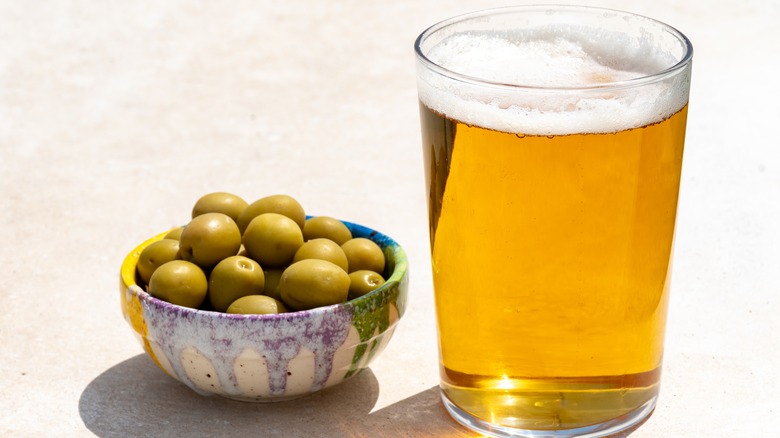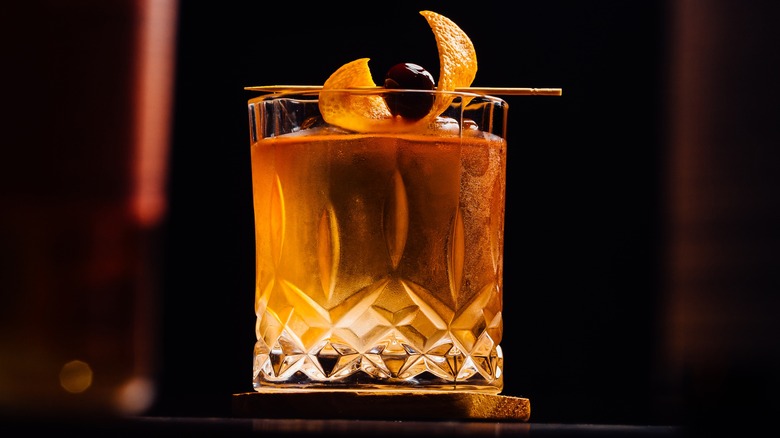The Beertini Is A Real Drink, And It's An Icon Of The Midwest
A beer martini. At first, it might sound like a cruel joke to play on your classic martini-drinking friends. But across the Midwest, the beertini isn't just a real drink — it's a beloved symbol of bar culture. No one knows who created it, what their inspiration was, or even if there was any inspiration. In fact, the only element that you might be able to tie to the true martini is the olives tossed in the glass. The reasoning is sound: Salt enhances the flavor of whatever it's added to, and olives are either cured in salt or brined in salt water. The practice of adding salt to low-quality brews isn't a recent trend, either — it's a foolproof method for improving the taste of cheap beer, and was especially popular during the post-Prohibition era.
How many olives you add is up to you — anywhere from a couple to a handful. The only rule is that the olives must be green, though it's perfectly fine if you want to get a bit fancy and use blue cheese-stuffed olives, another Midwestern staple. The choice of beer is crucial as well. It doesn't need to be a fancy, craft brew; in fact, an inexpensive, domestic one is preferred because the often flat, one-dimensional flavor allows the salty olive character to shine. Some beertini lovers add a splash of olive brine; its salty concentration adds more depth of flavor. Others use a pickle instead. And South Dakotans have tweaked it to make a pseudo-Michelada that they've dubbed Red Beer: just add tomato juice to the mix.
Take a look at these other Midwestern favorites
The beertini isn't the only favored drink in the Midwest. Michigan spawned the Hummer, a boozy milkshake made with white rum, Kahlúa, and ice cream. Another ice cream-based favorite is the Pink Squirrel, which was born in the 1940s at Milwaukee, Wisconsin's stalwart Bryant's Cocktail Lounge. While some recipes use heavy cream, the standard version uses crème de noyaux, a liqueur with an almond flavor, and the chocolate- and vanilla-based crème de cacao.
Also in Wisconsin, you'll find the eponymous Wisconsin old fashioned, sometimes called the brandy old fashioned. Cocktail purists might argue that a classic old fashioned is made with some sort of whiskey, but Midwesterners have preferred brandy since the post-World War II decades, when the quality of whiskey was mediocre at best. The brandy old fashioned is easy to drink, but if you aren't from Chicago, be wary if someone offers you a shot of Malört. This potent wormwood-flavored digestif was first created as a medicinal treatment in the 1920s before it became a recreational beverage. Even locals in the Windy City admit that the bitter spirit is an acquired taste, but having your first shot is a sort of boozy coming-of-age ritual.


